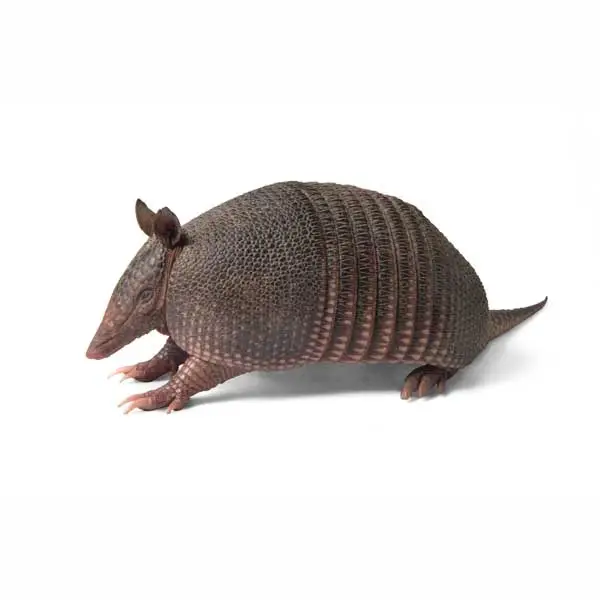
Actual Size: 2.5 feet long; weighs 12-15lbs.
Characteristics: About the size of an opossum or large house cat.
Habitat: Constructs burrows and may utilize abandoned burrows of other animals. Will sometimes burrow under the foundation of homes.
Habits:
Approximately 20 species of armadillo exist, but the nine-banded armadillo is the only one found in the United States. Armadillo means “little armored one” in Spanish and refers to the presence of bony, armor-like plates covering their body. When startled or scared, these armadillos can jump 4 to 5 feet high in the air. Found throughout the southeastern United States, these digging and burrowing mammals are a nuisance to homeowners as they destroy the landscape in their pursuit of food and shelter.
In the wild, armadillos prefer warm, wet climates and can be found in forest and scrub-brush areas in tropical and temperate regions. Armadillos are omnivores and prefer to construct their underground burrows in forests where they forage in forest litter for plants and small invertebrates. Armadillos construct their own burrows or use the burrow of another armadillo, tortoise, or naturally occurring holes. They do not hibernate and can not tolerate high temperatures above 85 degrees F. Their abandoned burrows are utilized by other animals, such as pine snakes, rabbits, opossums, striped skunks, burrowing owls, and snakes.
In their quest for shelter and insects, armadillos destroy lawns and gardens in the process and are considered destructive animals. Armadillos are powerful diggers and will burrow under plants in landscape, foundations, and driveways. They are capable of destabilizing tree root systems and building foundations with their tunnels. Additionally, armadillos have been known to be carriers of mycobacterium leprae, which causes leprosy. They can also carry tapeworms and salmonella in their feces. If you have an issue with armadillos, it is recommended to contact licensed wildlife professional.
To become the #1 pest control company in the South Carolina’s Grand Strand area through the delivery of the industry’s safest, most effective treatment solutions.
Copyright All Rights Reserved Bugs Out Pest Control LLC © 2024